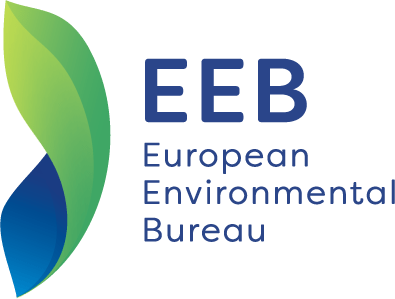Only one out of 13 EU Chemical Strategy benchmarks fully met
BRUSSELS, 23 April 20224
Slow progress on chemical protections as elections approach.
The EU is lagging in its commitment to “significantly reduce” people’s exposure to hazardous chemicals.
Four years since the bold Chemicals Strategy for Sustainability (CSS) [1] manifesto for change was launched and with EU elections just around the corner, only one out of 13 key benchmarks outlined in the CSS has been completely delivered, according to research by the European Environmental Bureau (EEB), the largest network of environmental organisations in Europe.
The report ‘From Risk to Resilience: Navigating Towards a Toxic-Free Future’ reveals that while the transition is making headway in some chemical safety areas, it is only just beginning in others. More efforts are urgently required to lessen the impact of harmful substances on human health and the environment and “make chemicals safe and sustainable”, as echoed by the European Environment and Chemicals agencies, just days before. These agencies also noted that “the overall use of the most harmful chemicals (in particular those that are carcinogenic, mutagenic and reprotoxic) is still growing”. Additionally, EU sold production of chemicals continues to grow and hit a decade high in 2022.
Tatiana Santos, Head of Chemicals Policy at the EEB, says:
“As the EU approaches pivotal elections, the EEB calls on future leaders to prioritise the completion of the CSS. While the early steps of REACH 1.0 and the CSS were commendable, much work remains. The upcoming Parliament and Commission must commit to building on this agenda and ensure a safer, toxic-free future for all.”
Key findings:
- Significant flaws persist in the Registration, Evaluation, Authorisation, and Restriction of Chemicals (REACH) Regulation. Chemical firms give regulators unreliable hazard data in a large majority of cases. In the absence of strict enforcement mechanisms, it is rare that firms are judged violative and chemical companies go unpunished. Officials, downstream manufacturers and consumers will remain largely blind to the risks posed by most chemicals in use today and for years to come if action is not taken urgently, the EEB concluded.
- Public health and environmental risks from chemicals are often underestimated by officials, product manufacturers, and consumers due to insufficient information and delayed regulatory response. In turn, there is a lack of awareness of the true cost that inaction on chemical threats will eventually incur.
- The only area showing notable progress is the enhancement of the decade-old Classification, Labelling and Packaging (CLP) Regulation, paving the way for new bans on hazardous chemicals. [2]
Just one day prior to this release, the European Commission published criteria for determining essential uses of the most harmful chemicals, marking a critical step toward mitigating unnecessary risks. This publication was not considered in the report.
However, progress in areas ranging from bans on carcinogens in children’s products to increased transparency about chemicals in everyday items, has been uneven. Moderate to considerable progress has also been made in most other reform areas, including measures to crack down on endocrine disrupting chemicals and PFAS ‘forever chemicals’, to protect water and to go beyond the one-by-one approach to regulating chemicals that experts told the EEB has been like “emptying the sea with a teaspoon”.
Yet, challenges remain:
The much-needed REACH reform has stalled, threatening progress across other areas.
The promise to stop the worst chemicals, those already banned in Europe, from being exported to world regions least able to deal with their impacts also remains unmet.
The review concluded that industry lobbyists frequently cause paralysis among national and EU level officials, who rarely take legal or financial measures against firms, even after dangers to the public or environment have been proven. After hastily approving new chemicals based on flawed hazard and use data, it frequently takes officials a decade or more to get dangerously uncontrolled chemicals under control, at great public expense.
This report is being published concurrently with the ‘Tomorrow’s Chemicals Policy: Perspectives and Challenges’ conference, organised under the Belgian Presidency in Brussels.
This event provides a pivotal platform to evaluate the progress of chemical policies at European and global levels and sets the stage for strategic discussions on the future directives in light of the Chemical Strategy for Sustainability.”
ENDs
Read the full report here.
NOTES TO EDITOR:
[1] The CSS was warmly welcomed by civil society groups in 2020 as a bold plan to fix Europe’s malfunctioning chemical regulations and even transform the bloc into a global leader in the production of safer chemicals. The EU recognised the “urgent need” to “significantly increase” protections against dangerous chemicals and promised “considerably stepping up enforcement of EU rules.” A legal text highlighted the “growing number of different hazardous chemicals in human blood and body tissue” and noted that almost all Europeans are worried about chemicals in products and the environment.
[2] The Classification, Labelling and Packaging (CLP) Regulation aims to identify and communicate chemical hazards. A greatly upgraded version of the law is set to be approved by the European Parliament and Council of the EU. This can start limiting persistent substances as well as endocrine disruptors, which are linked to infertility, thyroid disorders, diabetes, obesity, developmental effects and learning disabilities, among other classes of chemicals. Strengthening the CLP will enable bans of the most harmful chemicals still found in everyday consumer products, EEB said.
CONTACTS
- EEB Head of Chemicals Policy, Tatiana Santos, tatiana.santos@eeb.org (ES/EN/FR)
- EEB Policy Manager for Chemicals, Dolores Romano, dolores.romano@eeb.org (ES/EN)
- EEB Policy Officer for Chemicals, Olatz Finez, olatz.finez@eeb.org (ES/EN/FR/EUS)
- EEB Chemicals Policy Advisor, Helene Loonen, helene.loonen@eeb.org (EN/NL)
- EEB Communications Officer for Chemicals, Beatriz Ortiz Martínez, beatriz.ortiz-martinez@eeb.org (ES/EN/FR)

